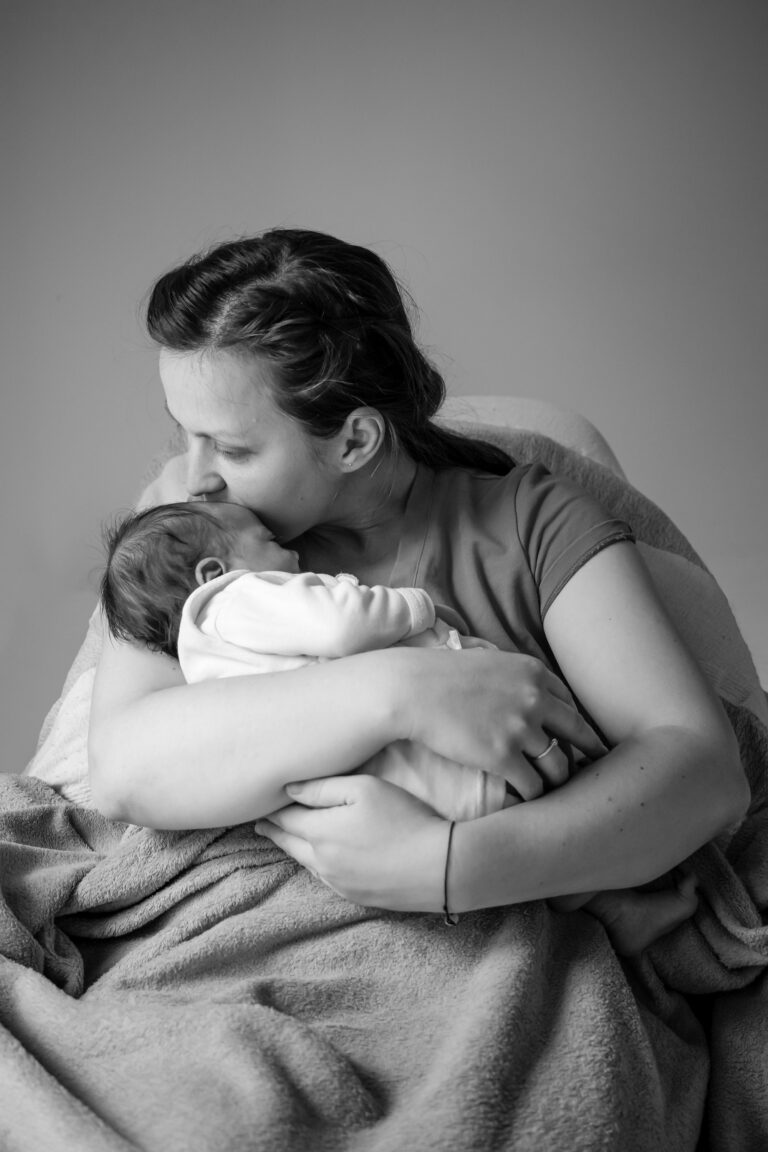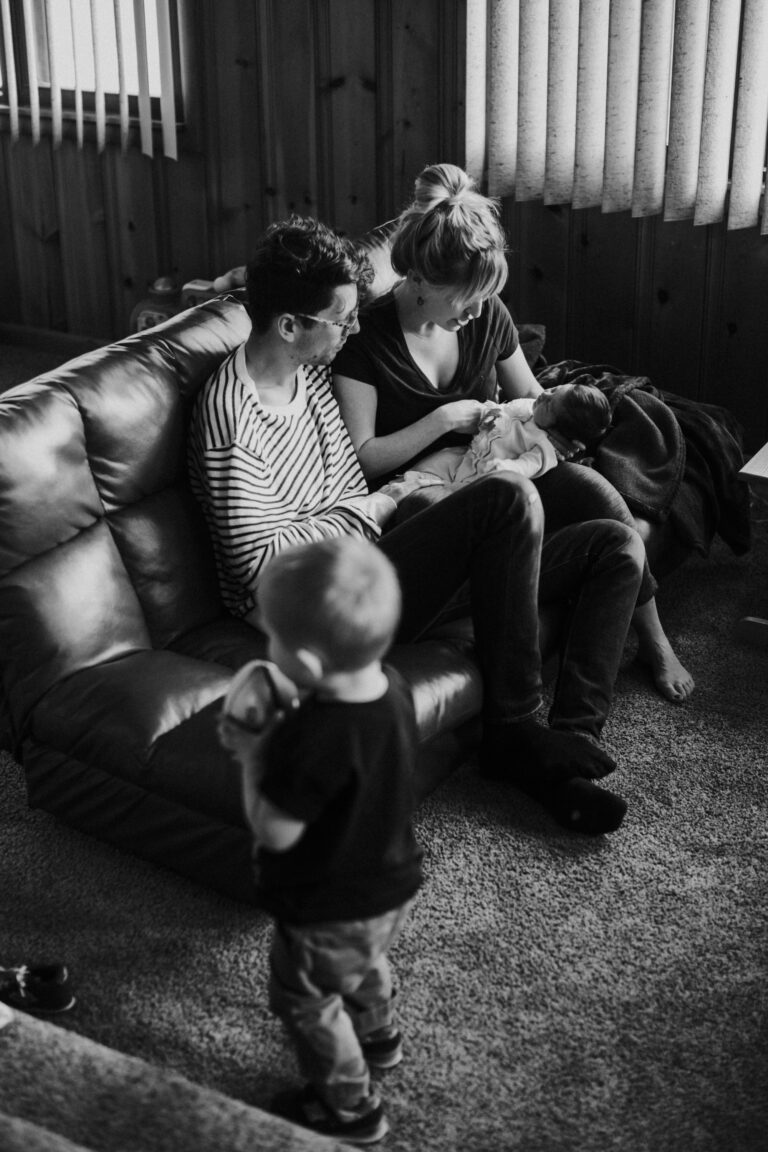You know those nights when your child tosses and turns, you wake up drenched in sweat or maybe find yourself staring at the flicker of streetlight dancing across the ceiling? Perhaps the pillow feels too firm, or the air in the room turns heavy after a humid day. Parents everywhere, juggling routines and responsibilities, often ask: does the space around us—what professionals call the “sleep environment”—truly make such a difference? From restless toddlers to overworked adults, sleep problems frequently spring not just from inner worries but from the physical, sensory, and even social fabric of the bedroom. Let’s explore—scientifically and practically—how changing small details like light, bedding, sound, or air can reshape not just your child’s night but your family’s entire well-being. What if a few tweaks could mean deeper, healthier sleep?
Sleep Environment Essentials for the Family
What Exactly Is a Sleep Environment?
A healthy sleep environment is more than arranging pillows or switching off the light. It’s a blend of ambient temperature, bedding comfort, sensory elements such as minimal noise and darkness, as well as maintenance of clean air and relaxed aesthetics. Every detail, from the firmness of the cot for a newborn to the placement of a white noise machine for a school-aged child, plays a role in shaping sleep patterns. In paediatrics, the sleep environment even extends to safety mechanisms—think of smoke-free surroundings, fitted sheets, or the strategic absence of soft toys for infants.
Health and Wellbeing Influences: The Science Behind Sleep Spaces
When professionals speak of a restorative sleep environment, they point directly to the balance between stress hormones like cortisol and sleep-inducing chemicals—melatonin being the best known. Peer-reviewed studies link poor sleep environments to risks like obesity, diabetes, cardiovascular changes, lower immunity, emotional turbulence, and learning difficulties in children. One simple example: just a burst of street-level noise can spike arousal, fragmenting deep sleep and elevating blood pressure. And for babies, an unsuitable environment increases incidents of SIDS (Sudden Infant Death Syndrome), highlighting the importance of a safe, cool, and quiet sleep environment.
Optimising Bedroom Setup for Quality Slumber
Temperature: Not Too Hot, Not Too Cold
Research consistently nominates a room temperature in the 16–20°C (60–67°F) range as ideal for sleep. Why? The human brain cools down as we prepare for sleep; higher temperatures can suppress this signal, while cold rooms can cause micro-awakenings and shivering. How to hit the sweet spot? Use fans or air conditioning in summer, light layers in the monsoon, and not-too-heavy blankets in winter, keeping a constant temperature.
Mattress, Pillow, Bedding: Foundation of Rest
The mattress isn’t a luxury—it’s a necessity. Adults do best with a medium-firm, supportive base; children and especially infants need a surface that is both firm and flat to maintain spinal alignment and lower the risk of suffocation. Materials matter—hypoallergenic and breathable options like cotton or bamboo limit allergen buildup and overheating. Pillows come next: adjust firmness to sleep position (side, back, or stomach), and always opt for what supports neck alignment. For infants, remember: only a fitted sheet and nothing else.
Air Quality and Ventilation
Fresh air is not just about comfort. Medical data tie airborne allergens—dust, pollen, indoor pollutants—to higher asthma and allergy rates in kids, disturbed sleep cycles, and even behavioural changes. Investing in air purifiers, regulating humidity between 30% and 50%, and frequent cleaning transforms the sleep environment by lowering triggers and keeping respiratory passages open at night.
Light and Darkness: Melatonin’s Best Friends
Our bodies rely on circadian rhythms—internal clocks guided by light exposure. Daylight in the morning nudges the body into wakefulness; conversely, dim, warm-toned lighting in the evening signals melatonin to rise. Block out intrusive streetlamps or blinking electronics with blackout curtains; use softer bulbs pre-bedtime. Children, especially, benefit from consistency in darkness, which helps synchronise developing body clocks.
Noise Management: Calm Amidst Chaos
From urban honks to the tick of a ceiling fan, noise can derail sleep cycles. For some, white noise—gentle, steady hums—creates a shield against abrupt sounds, settling the mind and body. Place beds away from windows and invest in devices like earplugs or sleep-friendly background masks. Children may associate certain repetitive sounds with security, creating sleep cues over time.
Room Layout, Colour, and Décor: Creating Calm
Ever noticed how clutter spikes anxiety, not just in adults but in children too? Science suggests decluttered, tidy bedrooms lower psychological stress. Arrange beds for easy circulation and design zones—one for sleep, another for play (if space allows). Choose muted blues, greens, or earth tones for paint and furnishings to decrease sensory overload. For babies, a minimalist approach, free from loose bedding, maximises both safety and calm.
Bedtime Rituals and Evening Habits
Winding down is not about a fixed script; it’s more an orchestration of cues that tell the body sleep is near. The hour before bed is precious:
- Ban screens: Blue light delays melatonin, especially dangerous for children’s delicate cycles.
- Favour gentle activities: Reading, light puzzles, calming music.
- Practice guided relaxation or basic meditation; even simple breathing exercises shift the nervous system towards rest.
- Serve herbal teas with soothing properties (camomile, tulsi), always minding fluid intake to avoid extra toilet trips at midnight.
- Dim all lights and try to keep the bedroom completely dark—darkness itself is medicine.
What to Avoid for Deeper Sleep
Certain culprits sabotage even the best-arranged sleep environment:
- Caffeine and stimulants (tea, cola) act as alertness boosters; consuming late afternoon can cut sleep cycles short.
- Heavy, spicy, or fatty meals challenge the digestive system, causing discomfort and delayed sleep onset.
- Alcohol, surprisingly, might initially relax, but metabolises into wakefulness and fragmented cycles later in the night.
- Late-night exercise or vigorous play raises heart rate and body temperature—a recipe for delayed, lighter sleep.
- Don’t juggle bedtimes—try to maintain a fixed routine, even on weekends.
Technology and the Modern Sleep Environment
The digital glow holds real power over hormones. Blue light suppresses melatonin much more than warm tones from a regular lamp. Consider installing blue-light filters or using glasses if screens are non-negotiable. Remove electronics from children’s rooms where possible, shifting to non-screen activities in the wind-down hour.
Scent, Personal Comfort, and Security
A whiff of lavender or a trace of chamomile can relax the nervous system, as shown in multiple sleep studies. Use diffusers cautiously, especially for young children—ensure oils are natural and extremely diluted. Familiar textures (a particular blanket, soft toy) boost the sense of safety, promoting faster sleep onset.
Troubleshooting Environmental Stressors
Noise, Air, and Community Factors
Bad air, unpredictable noise, uncomfortable humidity (especially during monsoons)—all these challenge quality sleep. Practical solutions: air purifiers, white noise machines, humidity control, regular cleaning, and, when needed, a change of sleeping room in the house. For families in dense localities, establishing interior quiet zones at night can be life-changing.
Social and Neighbourhood Impact
Where you live affects sleep environment quality. Unsafe or high-activity neighbourhoods often push sleep onset later and spike child anxiety, reflected in sleep complaints. Creating a sanctuary at home—through soothing rituals, secure routines, and loving connection—is a powerful buffer.
Managing Sleep Disorders Through the Environment
Insomnia: Reducing Barriers
Clutter, harsh light, wrong mattress, stray noises—all increase the risk for insomnia in both adults and children. Simplifying surroundings and strictly following calming pre-bed routines reduces night-time awakenings.
Sleep Apnoea and Breathing
For those with sleep apnoea, air quality is non-negotiable. Low-allergen bedding, slightly elevated sleeping positions (for adults), and keeping dust at bay make a strong impact. Always seek professional advice if snoring or breathing pauses persist.
Supporting Circadian Rhythm
Late-night bright exposure—or variable bedtime hours due to shift work—can destabilise biological clocks. Consistent darkness, blackout curtains, and a fixed sleep-wake schedule, coupled with a burst of morning daylight, help realign rhythms.
Family Considerations: Safe and Restful Sleep for Children
Safe Sleep for Infants
Always use a firm, flat surface, with nothing but a fitted sheet. No pillows, loose sheets, or soft toys—these present risks of suffocation or overheating. Place the infant on their back for every sleep and keep the space tobacco-free.
Children’s Sleep: Routine is Everything
Children thrive on repetition. Regular bedtime rituals, calming down routines, and consistency in surroundings (even when travelling) foster security. In shared rooms, visual dividers or personal items can create needed boundaries.
Shared Family Spaces
In joint families or small homes, shared spaces become the norm. White noise, blackout curtains, designated quiet times, and separate sleep zones (even a curtain makes a difference) ensure everyone gets their share of rest.
Personalising and Adapting Sleep Spaces
Day sleepers, shift workers, or those often travelling might struggle with inconsistent sleep. Simple techniques—portable blackout curtains, favourite pillow, white noise machine—can recreate a sleep environment wherever you go. Adjust bedding seasonally: lighter sheets for hot, sticky nights; soft, cosy layers for cooler months, always cleaned regularly.
Scientific Evidence: How the Sleep Environment Affects Health
The outcomes are not just anecdotal. Multiple studies confirm: improving the sleep environment lowers the risk for diabetes, obesity, hypertension, and even chronic behavioural or learning issues in children. Drawing the room cool, dark, quiet, and clean supports the body’s stress response—lowering cortisol and boosting emotional resilience.
Key Takeaways
- The sleep environment matters enormously: keep rooms consistently cool, dark, and quiet.
- Invest in supportive mattresses and allergen-free bedding; match pillow firmness to each sleeper’s needs.
- Embrace regular bedtimes and wind-down rituals; screens out, soft lights in.
- Declutter for both mind and body calm; design separate sleep, study, and play zones for children if possible.
- Block noise and light with blackout curtains, white noise, or rearranging the room layout.
- Babies are safest in smoke-free rooms, on firm, fitted bedding, placed on their backs, sharing the same room with parents but never the same sleeping surface.
- Make seasonal adjustments, personalise sleep spaces, and always consider professional advice if persistent sleep problems appear.
- For ongoing support, rich resources, and free health questionnaires for your children, download the Heloa application.
Questions Parents Ask
What does a healthy sleep environment look like for children?
A healthy sleep environment for kids often starts with simple comfort and security—a supportive mattress, fitted bedding, a cool but snuggly room minus distractions, minimal noise, and filtered light using curtains. Extra points for personal touches like a favourite soft toy or blanket, if age-appropriate for safety. The focus: an atmosphere that’s both safe and gentle, helping your child fully relax at bedtime.
Can adjusting the sleep environment improve sleep problems such as frequent night wakings?
Yes, small changes can make a powerful difference! If your child is waking up multiple times, consider adjusting the bedroom’s noise (steady sounds often help), experimenting with darker surroundings, or switching up sheets and sleepwear for comfort. Even tiny environmental triggers—like a glowing clock or rough bed linen—can disrupt deep sleep, so a bit of trial and error is normal for finding what truly works.
How can I create a sleep-friendly environment if siblings or parents share a room?
Shared rooms offer their own challenges, but small strategies go far. Use blackout curtains to block outside lights, synchronise bedtimes, and add a fan or white noise to mask sudden sounds. Furniture or curtain dividers can give a sense of personal space. Encourage kids to bring a soft item of their own—like a pillow or blanket—to boost security and comfort, making shared sleeping arrangements feel more personal and soothing.
Further reading:









